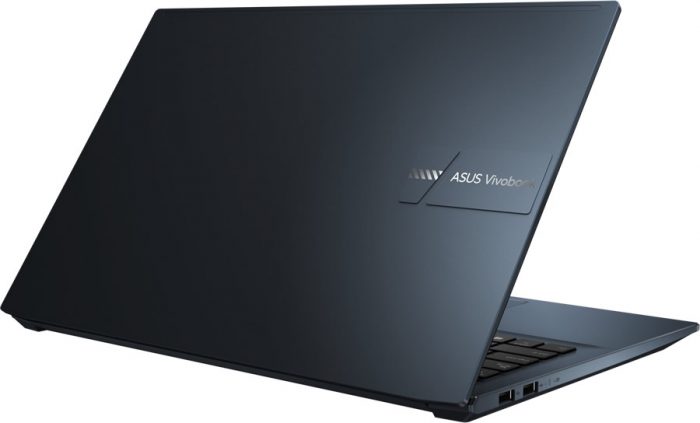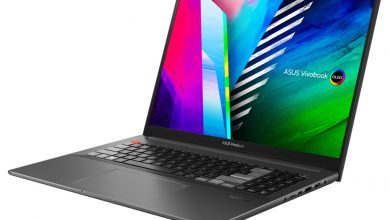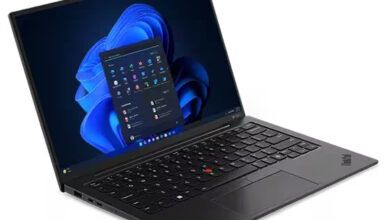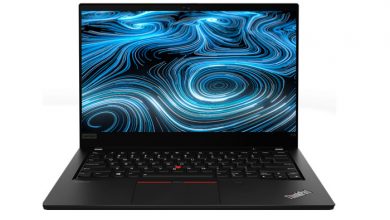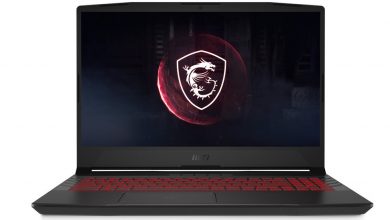Asus has been using its Vivobook series to release thin and light laptops that are always desirable to customers. The interesting aspect of Asus Vivobooks is that the company incorporates high-performing hardware into these notebooks. Usually, thin and light notebooks are deficient in performance. In addition to their weak performance, they are also poor in terms of interface and display. However, this is no longer the case as thin and light notebooks are now getting higher positioning in terms of performance. Today, we have thin and light notebooks in the market with high-power performance. The Asus Vivobooks is one such thin and light notebook series with top-notch hardware, productivity, and appearance.
The ultra-popular Asus Vivobook series notebooks are new. Nevertheless, this series already has a couple of models. There is the Vivobook Pro 15 OLED, Vivobook Pro 16X OLED, and the Vivobook Pro 14 OLED. Irrespective of the chip, the configuration remains powerful and the price is still attractive. Let us now look at the details of the cost-effective Asus Vivobook Pro 15 OLED.
The Asus Vivobook Pro 15 OLED Ryzen Edition is equipped with an AMD Ryzen 7 5800H eight-core standard pressure processor and a GeForce RTX 3050 GPU. This hardcore CPU and GPU combination, coupled with its good OLED screen and CNY 6,299 ($978) starting price, makes this device very attractive.
The Asus Vivobook Pro 15 OLED is a Windows 10 laptop with a 15.60-inch display. This screen has a resolution of 1920 x 1080 pixels, and the device also packs 8GB of RAM and 256GB of SSD storage. In terms of connectivity, users have multiple options, including Wi-Fi 802.11 Yes, Bluetooth, 4 USB ports (2 x USB 2.0), USB 3.2 Gen 1 (Type A), Thunderbolt 4 (Type C), HDMI Port, and Multi-Card Slot ports.
Specifications
| Screen | 15.60-inch WQXGA (1920 x 1080) 16:10 anti-glare display; DCI-P3:100%; Refresh Rate: 90Hz; Response Time: 0.2ms |
| Processor | AMD Ryzen 7 5800H |
| Wireless Connection | Wi-Fi 6 (MediaTek MT7921), Bluetooth 5.0, Ethernet with adapter |
| Graphics card | GeForce RTX 3050 GPU |
| Memory | 16 GB DDR4 3200 MHz |
| Storage | 512GB M.2 NVMe PCIe 3.0 SSD (single PCIe x 4 M.2 SSD slot) |
| Camera | 720P HD camera with privacy shutter |
| Ports | 1x USB-A 3.2 gen1, 2x USB-A 2.0, 1x USB-C 3.2 gen1, HDMI 1.4b, microSD card reader, 3.5 mm jack |
| Battery | 63 Wh, 120W charger with quick-charging |
| OS | Windows 10 Home |
| Weight | 1.65 kg |
This device is designed for efficient work as well as for light gaming and entertainment. This positioning makes the Asus Vivobook Pro 15 OLED very attractive to a wide range of users. This notebook is perfect because most office notebooks today need a gaming component which may be handy when the user needs to relax from office work.
Asus Vivobook Pro 15 OLED Design & Appearance
Just like other devices in the Vivobook series, the Asus Vivobook Pro 15 OLED comes with a top-metal design. Some parts of this notebook, like the bottom plate, are plastic to aid heat dissipation. While this design may not be the most premium, it is attractive enough for the price tag of this notebook. The feel of this notebook is not entirely smooth, it has a little gritty feel which gives this notebook a sturdy appearance and good grip. With this design, it will not be easy for this notebook to slide off your hand.

Although we consider this notebook as a thin and light notebook, it may not be entirely light for some folks as it weighs about 1.6kg. Of course, there are many notebooks in the market with lesser weight. However, for the hardware it carries and the performance it offers, this notebook is absolutely thin and light. The dimension of this notebook is 235.30 x 359.80 x 19.90 mm.
In addition to the gritty metal build, the top surface of the Asus Vivobook Pro 15 OLED comes with the popular CNC engraved LOGO, which is quite conspicuous. The model we reviewed has a quiet blue color option; however, this notebook also has a cool silver option. Unlike the Vivobook Pro 14, the Vivobook Pro 15 OLED quiet blue is noticeable at first glance although the color tends towards gray.
Asus Vivobook Pro 15 OLED Display
As we said earlier, the Asus Vivobook Pro 15 OLED comes with a large 15.6-inch OLED display with a resolution of 1920×1080. While burn-in is usually common with OLED displays, these screens have a huge advantage over their LCD counterparts. The OLED display brings higher brightness and more realistic colors. It also emits 70% less harmful blue light than LCD displays, which makes OLED displays more comfortable for the eyes.
This notebook OLED screen has a 100% DCI-P3 wide color gamut, 10bit color depth, 1000000:1 contrast ratio, 0.2ms response speed, and 600nits peak brightness. It has passed the Pantone color certification and has accurate and vivid colors. The display capability can ensure that the output image has professional-grade color accuracy. In addition, this display supports a 90Hz refresh rate as well as 133% sRGB, DisplayHR 600 True Black, and its peak brightness reaches 600 nits.

At the same time, this OLED screen has passed the TÜV Rheinland hardware-level low-blue light certification and the SGS Eye Care certification. This certification means that viewing this screen is less harmful to the eyes and is more suitable for users who need to work with the computer screen for a long time.
The Asus Vivobook 15 Pro comes with thin bezels on all sides, and on the top frame, there is a 720p camera that comes with a manual switch. The switch allows users to either deactivate or activate the camera. When the switch is deactivated, the camera sensor will be covered with an orange colored lid. However, when it is activated, then users can see the camera sensor. This physical anti-peep switch gives a 100% guarantee that there will not be a privacy leak after closing the camera. This method is a preferred choice for many recent notebooks.
Furthermore, the top frame also hosts the microphone sound port, and this location is convenient for use in scenes such as conference videos.
Display test
Using Starscream’s color calibration device, we tested this thin and light OLED screen. Note that this test was conducted in the default display mode.
Color gamut
Color gamut refers to the range of colors that can be expressed by a certain device, that is, the range of colors that can be expressed by various screen display devices, printers, or printing devices. The larger the color gamut value, the more colors the device can display. The Asus Vivobook Pro 15 has a DCI-P3 color gamut coverage rate of 96.9% and a DCI-P3 color gamut volume rate of 126.9%. For notebook screens, such color gamut performance is pretty good.
Color accuracy
The colors displayed on the screen often deviate from the colors seen by the human eye in real life. The smaller the color difference, the better the display, of course. When △E ≤ 1, the human eye can hardly distinguish the difference between the two colors. When 1 <△E < 3, the human eye can hardly distinguish subtle color differences. When △E ≥ 3, the human eye can distinguish the color difference and consider it as two similar colors. When △E ≥ 5, most human eyes can see the color difference and consider it as a completely different color. The average △E of the Asus Vivobook Pro 15 OLED is 0.74. This kind of color accuracy is also quite good, and it can actually be comparable to many professional-level photo retouching monitors. It’s really great!
Asus Vivobook Pro 15 OLED Keyboard
This Asus Vivobook 15 Pro OLED has one of the most simple but elegant keyboards that we have ever reviewed. The company uses a soft skin-friendly plastic material for the key build. Furthermore, this keyboard comes with a 1.4mm long keystroke, and the curved concave keycap makes it more comfortable for users. The keycap design balances the fingers so as to reduce the tendency to click on multiple keys at the same time. At first glance, this keyboard appears sleek. However, the keyboard is not only attractive. There are also a couple of changes. The first button that you will probably notice on this keyboard is the Enter Key. This is because the company uses a special CNC engravement design to make this important key stand out.

The power button is located at the front right of the keyboard. It also integrates a fingerprint reader, which allows users to quickly unlock the computer. The power button also supports Windows Hello fingerprint recognition. However, unlike the other buttons, it does not have an always-on light or a backlight. With the fingerprint sensor on the power button, users can log in directly without entering a password by clicking directly on the boot.
Furthermore, the Asus Vivobook 15 Pro OLED uses a white backlit keyboard design with a numeric keypad. The white backlight supports turning off, and there are three levels of backlight intensity adjustment. This means that users can adjust the backlight intensity to suit the usage scenario. Also, the left and right palm rests contain a lot of stickers that show the selling points of this device. On the left palm rest, there is the AMD Ryzen, GeForce, and Pantone stickers. On the right side, there is a sticker that shows the screen, CPU, WiFi, and sound details. Also, there is a “sound by Harman / Kardon” engravement on the right palm rest.
On the keyboard area, we also have the 5.9-inch large touchpad, which measures about 12.9×7.4cm. This touchpad is designed with a special glass surface treatment process which gives it a premium and smooth feel. Just like on the Vivobook 14 Pro, the Vivobook 15 Pro OLED also has a feature that allows users to deactivate the microphone and camera through the shortcut keys Fn+F9 and Fn+F10, respectively. Furthermore, the Page Up, Page Down, Home, and End are now embedded on the top, down, right, and left direction keys, respectively. To activate any of these keys, the users will have to hold shift and press the key. For instance, if you need to use the Page Up button, simply hold Shift and the top direction key. Asus had to embed these functions on the direction key because the extra column of Function keys previously available on VivoBook 14 models is no longer available.
Asus Vivobook Pro 15 OLED Connectivity & Internals
The right side of this thin and light notebook is designed with a power interface, a USB 3.2 interface, an HDMI interface, a Type-C interface, a TF card reader slot, and a 3.5mm headphone headset combo interface. Also, this device has two USB 2.0 ports on the left side of the fuselage.
The bottom of the fuselage has a large area of heat dissipation and ventilation holes. When you look at the bottom of this device, it appears that there are three rows (vents) for heat dissipation. However, the first row is just a decorative effect, and if you look closely, you will see that you cant see the interior of the device from the first row. The heat dissipation vents are therefore just the second and third rows.
The Asus Vivobook 15 Pro OLED uses a dual-fan heat dissipation design. It comes with two flat heat pipes and two air outlets, both of which exhaust air to the rear of the fuselage.
The memory is soldered on the motherboard. The M.2 solid-state drive is produced by SK Hynix, TLC particles, with a capacity of 512GB. At the same time, this M.2 solid-state hard drive is attached with a thermally conductive paste, and its heat will be conducted to the bottom cover.
Also in the interior of this device, we can see that the wireless network card is MediaTek MT7921, which supports Wi-Fi 6. Furthermore, the battery capacity is 63Wh. In addition, the bottom cover conceals two copper heat sinks for the M.2 SSD and video memory respectively. Judging from the interior of this notebook, the Asus Vivobook 15 Pro OLED has no room for upgrading in terms of hardware.
Asus Vivobook Pro 15 OLED supports AI microphone noise reduction function. Using ASUS‘ exclusive AI microphone noise reduction software, users can reduce the noise of voice conversations on any type of headphones or microphones such as 3.5mm audio jack, USB, or Bluetooth, and then bring clear video call effects.
Furthermore, this device comes with WiFi 6 technology, and its connection performance can be further optimized through the built-in Asus WiFi Master. Asus WiFi Master can intelligently select the best WiFi signal connection so that the notebook can get the strongest signal access at the moment no matter where it is.
Asus Vivobook Pro 15 OLED Performance
CPU
The Asus Vivobook 15 Pro comes with the AMD Ryzen 7 5800H standard mobile processor. This chip is based on Zen 3 architecture and a more mature 7nm process. It has 8 cores and 16 threads, 16MB L3 cache, and achieves a 19% increase per clock cycle (IPC). Furthermore, this chip brings a 24% energy efficiency improvement relative to the previous generation.
It is important to note that all the tests except the battery life test were conducted with the fan mode – high-efficiency mode, in order to show the optimal performance of this thin and light notebook. However, the battery test was conducted in fan mode – standard mode.
On CPU-Z and Geekbench 5 software tests, the single-core and multi-core performance of the Ryzen 7 5800H is very strong, and it is promising in terms of productivity and gaming. The memory latency is 75.1ns, and the performance is also good. The operating mode of this 512GB M.2 solid-state drive is PCIe 3.0 x4.
The results of the CrystalDiskMark test software show that the SSD is very good. The result shows a sequential read speed exceeding 3500MB/s and a sequential write speed exceeding 2900MB/s.
GPU
Looking at the GPU, this device comes with the GeForce RTX3050 GPU. This chip is based on the GA107 display core, with 2048 sets of CUDA cores, 32 sets of raster units, and 64 sets of texture units. It also has 128bit wide and 4GB capacity GDDR6 video memory. The default GPU frequency of the Asus Vivobook Pro 15 is 712MHz, the Boost frequency is 1057MHz, and the memory frequency is 1375MHz (equivalent to 11000MHz).
According to the official NVIDIA statement, the NVIDIA Ampere architecture has the second generation RT Core (Ray Tracing Core), the third generation Tensor Core, and the new SM multi-unit stream processor. The running speed is faster, the efficiency is higher, and the throughput of the FP32 in the SM is doubled. With the second-generation RT Cores, the throughput of light and triangle intersection is doubled, and the dynamic blur performance is greatly improved. The third generation Tensor Cores optimizes sparse network performance and greatly improves AI computing performance. This chip is a significant improvement relative to the previous generation. The Ray Tracing technology in this GPU brings the entry-level unique gaming experience to a new level. NVIDIA’s unique DLSS 2.0 and Reflex low-latency technology improves the smoothness of gaming with this notebook and generates beautiful and clear dynamic pictures.
To test the GPU, we used Adobe Premiere Pro, which is a world-renowned video creation tool. To export a 480p quality 15fps video with a length of 11 minutes and 15 seconds takes 7 minutes. However, after turning on the graphics card hardware acceleration, the export time only took 3 minutes and 06 seconds. This is much faster than the processor export alone. This also shows the importance of advanced RTX graphics cards in the video field.
Since this is not a gaming notebook, we did not perform any intense gaming tests. However, considering the affinity of the GPU to gaming, we did gaming measurements for Cyberpunk 2077 and Tomb Raider: Shadow. Both games are popular light chasing masterpieces, and they are very representative. The actual measurement shows that the Asus Vivobook Pro 15 handles these games well at 1080p resolution without the light chasing special effects. If you want to turn on the light tracking effect, we suggest you reduce the resolution or image quality to increase the game frame rate.
Asus Vivobook Pro 15 OLED Battery Life, Temperature
To test the battery of this device, we unplugged all external devices such as the mouse, earphones, and USB flash drives. We also deactivated the Wi-Fi connection and set the display brightness to 50%, Using PCMark 10, this thin and light notebook achieved 11 hours and 33 minutes. It performed very well and can meet the needs of high-intensity mobile office use. It
For this test, the room temperature was maintained at about 26°C, and we used the AIDA64’s built-in stress test with a CPU + GPU dual baking machine. After turning on the dual baking machine for 10 minutes, the CPU temperature stabilized at about 86°C, while the frequency stabilized at about 2.7GHz. Also, the power consumption was about 35W. The GPU temperature stabilizes at about 70°C, and the power consumption is about 50W.
An infrared imaging test on the keyboard surface shows that the temperature localizes in most parts of the keyboard and some parts of the display. This temperature reaches about 50°C. Considering its thin body and good configuration, such a temperature performance is actually not entirely bad.
Summary
The Asus Vivobook Pro 15 has an excellent OLED screen, a first-class combination of A and N hard cores, a powerful solid-state drive, a richer I/O interface, a long enough battery life, and rich functions provided by the MyAsus main control center. These six (6) points have left a very good impression on this notebook.
The Asus Vivobook 15 Pro prides itself as a thin and light notebook for both work and play. It is a perfect office notebook but also incorporates some gaming features and handles high demanding games pretty well. Of course, it has an OLED display which is not very common in notebooks and this makes it even more attractive.
Just like other Vivobooks, the Vivobook Pro 15 pays much attention to privacy. The physical knob which covers the camera effectively prevents malicious sneak shots, and there are also special shortcut keys that disable the camera and microphone with one click.


